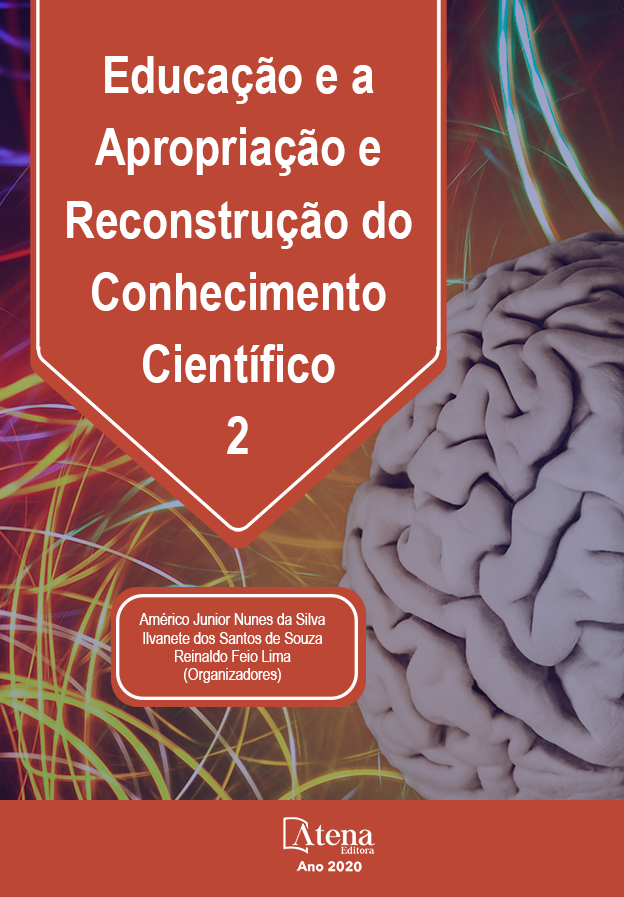
ENSINO DE CONCEITOS GEOMÉTRICOS EM ARTES NA ESCOLA BÁSICA: USOS DO TANGRAM NA METODOLOGIA DA ENGENHARIA DIDÁTICA
Este texto apresenta os resultados de uma pesquisa realizada com alunos do 7º ano do Ensino Básico, faixa etária de 13 anos, durante aulas de Arte, numa escola pública, em Salvador, Brasil, entre os meses de fevereiro e abril de 2019. Diante das dificuldades apresentadas por alunos desta idade no raciocínio abstrato, para a compreensão de problemas matemáticos e das ciências físicas, propusemos uma hipótese de trabalho, segundo a qual, a disciplina de Arte pode contribuir para desenvolver habilidades necessárias à compreensão de algumas propriedades dos objetos geométricos para a construção do raciocínio lógico espacial, necessário para a resolução de certas tarefas. Essas habilidades podem ser potencializadas a partir da interação dos alunos com situações didáticas idealizadas por intermédio do tangram - um jogo de quebra-cabeça, que tem sido utilizado em diversas pesquisas que investigam as articulações entre o lúdico e alguns conteúdos da matemática como os da geometria elementar e que compunha o meio de ensino (milieu). O referencial teórico-metodológico adotado foi o da Teoria das Situações Didáticas, de Guy Brousseau e o da metodologia de pesquisa da Engenharia Didática, de Michèle Artigue. A princípio, investigamos as concepções espontâneas dos alunos sobre objetos geométricos: ponto, reta e ângulo, o que indicou a necessidade de trabalhar propriedades associadas à simetria de figuras planas. Foram identificados alguns obstáculos como a ausência de termos próprios da geometria nas respostas analisadas. No entanto, constatou-se que as propriedades do tangram favoreceram o aprendizado, o que foi previsto nos objetivos de ensino. Diante desse quadro, a situação didática intermediou o lúdico e sua parte concreta através do jogo quebra-cabeça tangram e a compreensão de noções geométricas abstratas com a de simetria, foi validada, pois os conhecimentos prévios dos alunos e essas noções se aproximaram ao longo do processo.
ENSINO DE CONCEITOS GEOMÉTRICOS EM ARTES NA ESCOLA BÁSICA: USOS DO TANGRAM NA METODOLOGIA DA ENGENHARIA DIDÁTICA
-
DOI: 10.22533/at.ed.0892002127
-
Palavras-chave: Tangram, Engenharia Didática, Arte, Geometria
-
Keywords: Tangram, Didactic Engineering, Art, Geometry
-
Abstract:
This paper presents the results of a survey conducted with students of the 7th grade, age 13, during Art classes at a public school in Salvador, Brazil, between the months of February and April 2019. Given the difficulties presented by students of this age in abstract reasoning, for the understanding of mathematical problems and the physical sciences, we proposed a working hypothesis, according to which, the discipline of Art can contribute to develop skills necessary for the understanding of some properties of geometric objects for the construction of logical spatial reasoning, necessary for the resolution of certain tasks. These abilities can be enhanced by the interaction of students with didactic situations idealized through the tangram - a puzzle game, which has been used in several researches investigating the articulations between the ludic and some contents of mathematics such as elementary geometry and that composed the teaching medium (milieu). The theoretical-methodological reference adopted was Guy Brousseau's Theory of Didactic Situations and Michèle Artigue's Methodology of Didactic Engineering. At first, we investigated the spontaneous conceptions of students about geometric objects: point, line and angle, which indicated the need to work on properties associated with the symmetry of plane figures. Some obstacles were identified such as the absence of geometry terms in the analyzed answers. However, it was found that the tangram's properties favored the learning, which was foreseen in the teaching objectives. The didactic situation intermediated the ludic and its concrete part through the puzzle game tangram and the understanding of abstract geometric notions with that of symmetry was validated, because the previous knowledge of the students and these notions approached along the process.
-
Número de páginas: 20
- NANCY MELO BORGES VIEIRA DO NASCIMENTO
- JOSÉ VIEIRA DO NASCIMENTO JÚNIOR


